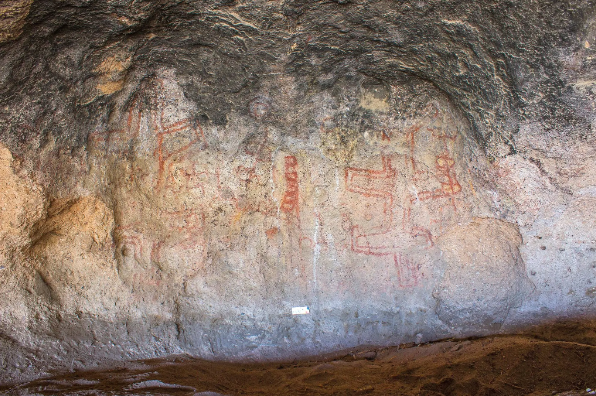- |
They do not date back to the last thousands of years as previously thought, but to around 8,200 years ago:Within the already-attented archaeological site Cueva Huenul 1, in the desolate Patagonian desert, a cave with nearly 900 paintings has forced scientists to significantly revise their estimates.Among the most mysterious reasons A comb pattern that first appeared over 8 thousand years ago has been discovered, which thus becomes the oldest cave painting in Patagonia and among the most primitive ever found in South America.According to experts, cave artists continued to draw the same image for thousands of years with the aim of "passing down precious lessons" during a time when climate change threatened their survival.The research results were included in a study already subjected to peer review and published in the journal Science.«We got the results and we were very surprised. It was a shock and we had to rethink some things, commented Guadalupe Romero Villanueva, author of the study and archaeologist at the National Institute of Anthropology and Latin American Thought in Buenos Aires.

Patagonia is a region of South America located at the southern tip of the continent.It includes the territories of Argentina and Chile for an extension of 900,000 square km and, according to current discoveries, it was not reached by humans until 12,000 years ago.In that period the first inhabitants prospered in the area called Cueva Huenul 1 until, about 2,000 years later, theThe area became arid and hostile due to climate change.According to Dr. Romero Villanueva, the comb drawings overlap precisely with this long period of difficulty and, according to her colleague and co-author of the research Ramiro Barberena, they cover approximately 3,000 years of painting with the same motif and are proof «of the continuity in the transmission of information in these very small and very mobile societies».According to Villanueva, in fact, rock art «emerged as part of a resilient response to ecological stress by nomadic and sparsely populated populations».There discovery it occurred through the radiocarbon dating method, i.e. a technique based on the measurement of the relative abundances of the radioactive isotope C14, which has a half-life of approximately 5,730 years.The two researchers then analyzed the paint and found that it was probably made with charred wood from burned shrubs or cacti.
Scientists, despite the fact that the meaning of the drawings has been lost over time, have then hypothesized which may have “contributed to preserving the collective memory and oral traditions of peoples who survived the long period of climate change”, adding that the sharing teachings through rock art may have increased their chances of survival in this environment and that the persistent presence of the motif in the cave could open a new window on the prehistoric peoples of Patagonia.Villanueva concluded:« You can't help but think of these people.They were in the same place, admiring the same landscape;the people living here, perhaps families, gathered here for social aspects.It's really exciting for us."
[by Roberto Demaio]
